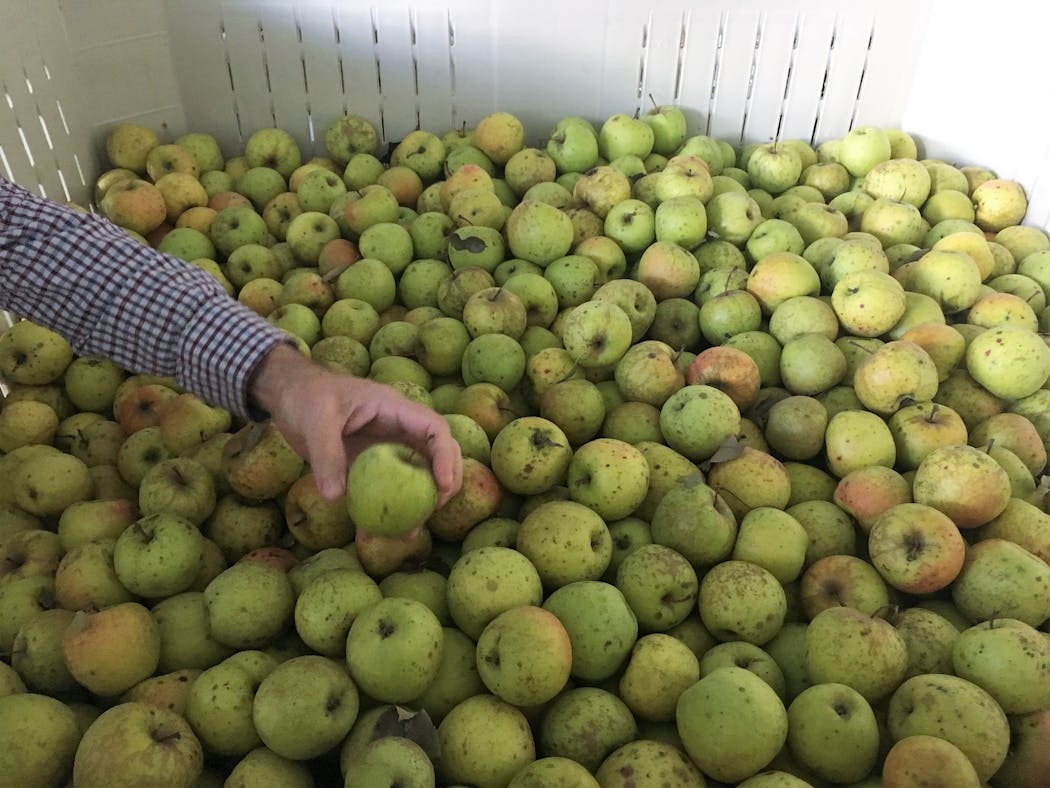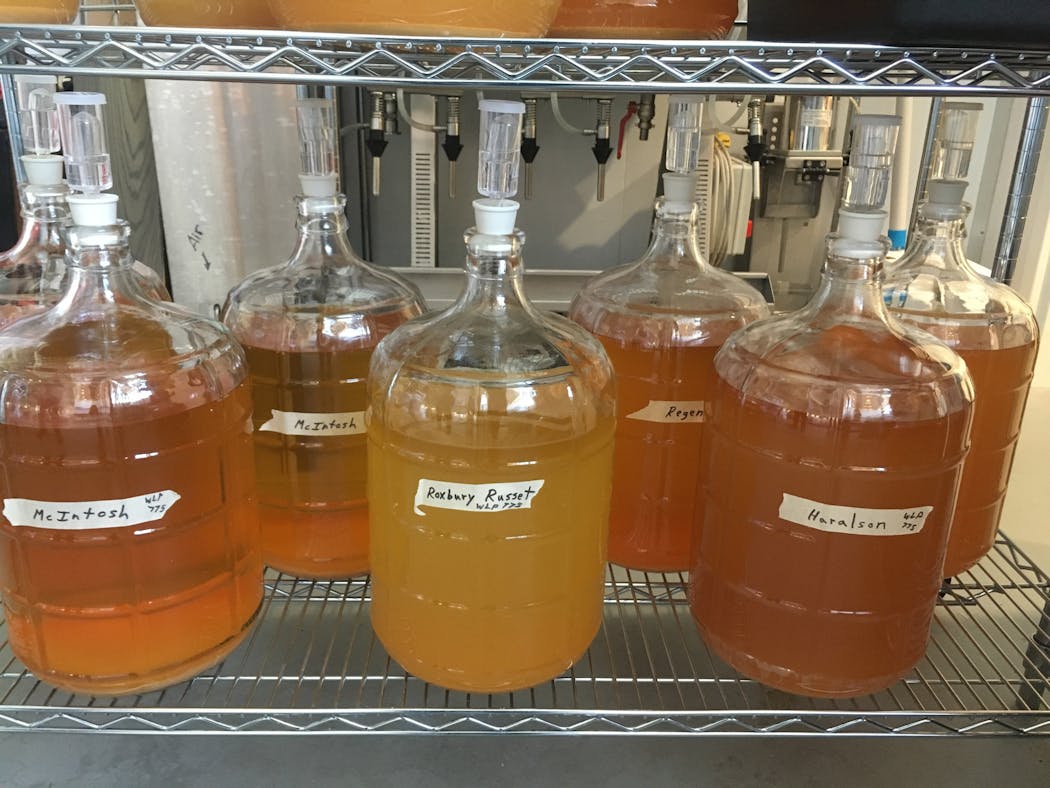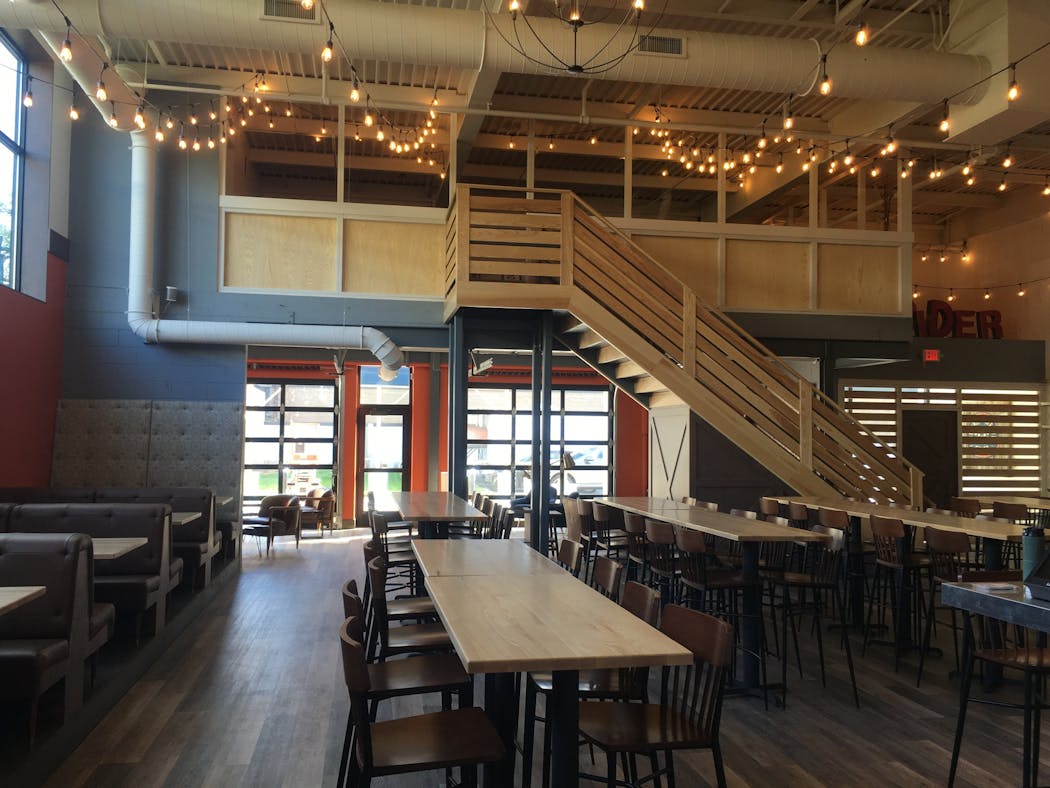Cider-making was just a basement hobby for Steve Hance and Colin Post back in 2012. For years, the childhood friends from New Brighton would tinker with home-brewing for parties and other social gatherings. Then came the Minnesota State Fair.
Hance entered a batch from his basement cider laboratory. The 12th batch, in fact. He chose well. Hance took home a blue ribbon in the State Fair's home-brewing competition, and he and Post decided to get serious.
Six years later, the attorney and elementary schoolteacher have pretty much left their jobs to turn cider-making into full-time careers. Their Number 12 Cider, which they served out of a barn on an orchard in Buffalo, Minn., the past few years, is now based out of a 7,000-square-foot space in Minneapolis' North Loop.
Number 12 Cider House officially opens on Saturday (Nov. 10) at 614 N. 5th St. (651-246-9995, number12ciderhouse.com)
They've brought some of the orchard with them. Wood floors and wide white planks on the walls give the soaring space a cozy vibe.
"We didn't want to be the same as other taprooms — warehousey, cold," Hance said. "We're a winery, and we wanted to bring the farm feel without going overboard."
Number 12 Cider is the first tenant of a 56,000-square-foot building that used to be the site of the Weather-Rite company, which manufactures HVAC equipment. It was redeveloped by Schafer Richardson from industrial use to a creative office and warehouse space.
The site at 700 N. 5th St. still has an industrial feel with 17.5-foot-high exposed ceilings and concrete floors. One of the largest changes to the building is that more light has been brought in with smaller front windows enlarged, glass blocks replaced with windows in different areas and loading dock doors replaced with glass garage doors. Schafer Richardson also tore down a two-story building to the side to allow for outdoor space. "I think it's a different feel than a brick-and-timber building, but it is still warehousey," said Mike Olson, who is responsible for leasing at the building. Schafer Richardson is negotiating a lease with a large unnamed office tenant for most of the remaining space.
But in Number 12 Cider's corner of the building, a barn-wood door and midcentury furniture in a mezzanine lounge give the soaring space a warmth to contrast to the more industrial look of many local taprooms.
On tap (16 of them, by December) are dry, sparkling ciders from small batches of specialty apples grown largely in Minnesota and surrounding states (with some of the apples coming from Oregon, where the cider business is booming and orchards are keeping pace).
"It's in between wine and beer," said Post. (Most ciders fall between 5 and 7 percent alcohol by volume.) Their product differs from the beer-like apple graff, a beverage made with juice, grain and hops, like that brewed at Minneapolis' Sociable Cider Werks. Number 12 Cider is only juice and yeast.
Hance describes one cider as "like a sauvignon blanc." Others are barrel-aged, and still others are fermented along with other fresh or dried fruits. All are naturally gluten-free. (Eventually, a wood-fired pizza truck, Little Tomato, will be serving food, and some options will be gluten-free as well.)
The back of the taproom, where the apples are pressed on wooden racks, doubles as a laboratory where Hance and Post experiment with different apples, yeasts and blends. Through trial and error, they've learned that the best tannins come from beat-up little crabapples; some of their least successful attempts came from Minnesota-grown Honeycrisp, which loses its signature sweetness during fermentation.
Their process harks back to the 1800s, when cider was something of a national drink in the United States. Though it faded for some time, it's now the fastest-growing segment of the U.S. beverage market, according to some studies.
For those who have only tried bottled hard cider à la syrupy-sweet Angry Orchard, the delicate taste of Hance and Post's ciders may come as a surprise. "There's confusion in the marketplace," Hance said. "We could fool wine drinkers."
Nicole Norfleet contributed to this report.
Singing, ceremonies and straw hats: Olympics opening ceremony in Tahiti centers Polynesian culture

Three 101-year-old friends recall fond memories in 1940s Alexandria
Celine Dion makes musical comeback at Paris Olympics with Eiffel Tower serenade







